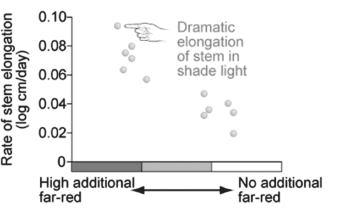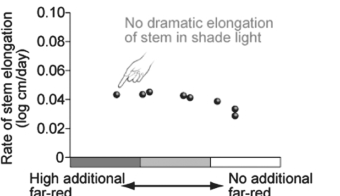Question 38
(Multiple Choice)
Species from sunny habitat (Chenopodium)

Species from shady habitat (Teucrium)
 Figure 37.1
Figure 37.1
-The data in the figure above were taken from a study on the effects of far- red light on stem elongation. The data indicate that plants from shady habitats do not respond to far- red light by growing taller. Which of the following would be a logical hypothesis for why these plants do not respond to far- red light?
A) The shade plants do not have protein kinases.
B) The shade plants do not have phytochrome.
C) The shade plants do not have phototropin.
D) The shade plants do not have cryptochromes.
E) All of these are reasonable hypotheses.
Answer